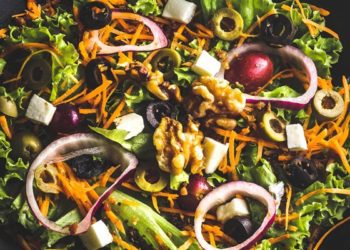Fruit consumption among US youth differs by age, race
1. Among over 3,000 US youth who responded to the National Health and Nutrition Examination Survey, half of their overall fruit intake came from whole fruits, while another third came from 100% fruit juice.
2. There were significant differences in fruit consumption patterns between age and race, but not gender. Black youth ate significantly less whole fruit and drank significantly more juice than their white, Hispanic, and Asian counterparts.
Evidence Rating Level: 2 (Good)
Study Rundown: The Dietary Guidelines for Americans recommend that children consume 1 to 2 cups of fruit per day, with a preference for whole fruit. Past research has shed light on the source of fruit consumed by US children. However, little is known about what type of whole fruits (or juices) children are eating. This study used national data to evaluate fruit consumption patterns among US children. Findings indicated that the average youth ate over 1 cup of fruit a day. About half of fruit consumption came from whole fruits, while one third came from 100% juice. Younger children drank more juice, while older children ate more whole fruits. Black youths ate significantly less whole fruit and drank significantly more juice compared to white, Asian, and Hispanic youth. Apples were the most commonly consumed whole fruit. Similarly, apple juice was the most common juice consumed among 2-5 year olds, while citrus juices were the most common among 6-11 and 12-19 year olds. This study revealed distinct consumption patterns among age-specific and racial and ethnic groups that can be used to inform appropriate anticipatory guidance in primary care settings. While this study uncovers clinically useful patterns, it is limited by potential measurement error due to differences in data collection methods between age groups.
Click to read the study, published today in Pediatrics
In-Depth [cross-sectional study]: This study utilized interview data from the National Health and Nutrition Examination Survey from 2011 through 2012. A total of 3129 youth between ages 2 to 19 years were included in the analysis. Trained interviewers collected data directly from children 12 and over, while proxies (parents, guardians) served as interviewees for children under 12. Fruit consumption was quantified by form of fruit (e.g. whole, 100% juice, fruit drink) and type of fruit (e.g. apple, banana, citrus). Overall, 53% of total fruit consumption among youths came from whole fruit, with apples accounting for 18.9% of total fruit intake. Thirty-four percent of fruit consumption was in the form of 100% juice, most commonly apple juice in chidren 2 to 5 years old and citrus in older children. Per day, American youth were eating 1.25 cup equivalents of fruit, consistent with recommendations (95% CI 1.14-1.37). Children 2-5 years old consumed 40.9% of their total fruit as juice, while 6 to 11 year olds consumed 28.2% as juice (P < .05). Black youth consumed 42.5% of their total intake via 100% fruit juice, a significantly higher amount compared with white (30.7%), Asian (29.5%), and Hispanic (34.8%). On the other hand, black youth ate a significantly lower proportion of whole fruit (42.8%) than white (54.6%), Asian (60%), and Hispanic (54.6%) children. There were no significant differences in form of fruit intake by poverty status, or gender.
Image: PD
©2015 2 Minute Medicine, Inc. All rights reserved. No works may be reproduced without expressed written consent from 2 Minute Medicine, Inc. Inquire about licensing here. No article should be construed as medical advice and is not intended as such by the authors or by 2 Minute Medicine, Inc.







